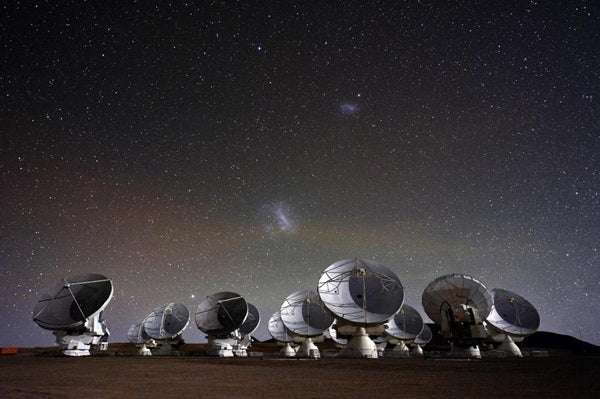The Atacama Large Millimeter/submillimeter Array (ALMA) is the largest telescope studying radiation at these long wavelengths. This radiation comes from cold objects in the sky — like dust disks that will eventually lead to planets and prestellar cores marking the very early stages of star formation.
From a plateau some 16,400 feet (5,000 meters) above sea level at the northern portion of Chile’s Atacama Desert, ALMA uses 66 antennas — the last batch are currently in the testing phases. Even though it’s still early in the project, the array has logged many discoveries. Here are a few of the biggest finds so far this year.










